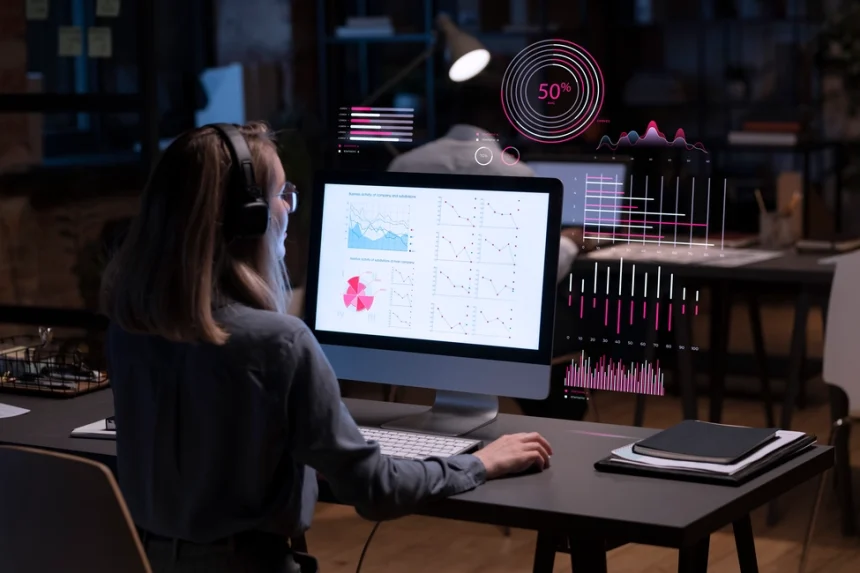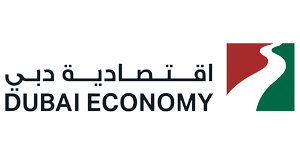By 2025, simple web design is expected to continue outperforming messy interfaces. The method is user-centered, fast, and clear. By eliminating irrelevant distractions, companies can simplify their communication and improve conversion rates. Effective experiences are achieved through clean layouts, basic typography, and intuitive navigation. This sophisticated look helps brands in Dubai and other regions load more quickly, be more mobile-friendly, and have an enhanced visual presence. This article examines the question of why this design type remains prevalent and how it can improve website usability, as well as the reasons behind its persistence as a trend in rapidly evolving digital environments. You’ll learn about the emotional impact, navigation logic, performance gains, and benefits of minimal design that are shaping modern web presence in 2025.
Visual Clarity and User Focus
Minimal design improves comprehension and engagement. By prioritizing space, typography, and content hierarchy, users can quickly find what matters. A clean website layout removes friction and makes interaction intuitive. Businesses using this style experience fewer distractions and higher engagement rates. Visual clarity also strengthens brand perception. When visitors see simple interfaces, their trust increases because clarity conveys a message more effectively. It works especially well for mobile and touch interactions. Minimal designs reduce cognitive load, improving decision-making. Scanning becomes easier, and content conversion paths become clear. Removing extra elements ensures that messages work harder. The clean visual makes users focus on the main goals, such as contact, purchase, or sign-up.
Performance and Speed Benefits
Lightweight pages load quickly and improve search rankings. Minimalist websites have fewer scripts, smaller assets, and cleaner code. That translates to faster first paint and load times. Performance boosts also benefit SEO and accessibility. Simple designs reduce hosting costs and bandwidth usage. They also simplify testing and maintenance. The reduced complexity means developers spend less time debugging. Faster builds streamline deployment schedules. For brands scaling quickly or launching campaigns, this speed is a major advantage. Minimalist design enables seamless functionality across platforms. Users perceive it as polished and professional. Speed gains and simplicity thus support both user retention and technical scalability.
Timeless Aesthetics and Longevity
Trends come and go, but minimalist style stays. Minimal interfaces avoid dated patterns and excessive ornamentation. This enduring style enables businesses to remain current without requiring frequent redesigns. A simple website design trends ensures brand consistency across projects and years. With fewer visuals tied to fads, maintenance is easier, and redesign cycles are extended. This stability aids in brand recognition and reduces costs related to habit changes. Designers focus on content strategy and messaging rather than decoration. As visual preferences change, minimalist sites adjust elegantly.
Clean Navigation and Structure
Minimalist pages often feature clear navigation, concise menus, and predictable layout patterns. This structure guides viewers logically through pages. Each click has a purpose. This lowers bounce rates and time-on-page. Findability and the flow of content in line with business objectives are enhanced through strategic layout. Clean interfaces reduce decision paralysis. Users see fewer options but can make choices faster. When combined with a good content strategy, navigation becomes intuitive. Decluttered menus and calm spacing reinforce usability. A visual hierarchy helps users understand where to focus and what to click next. Designers are making the journeys smoother and avoiding over complication. With navigation clarity, interaction becomes seamless and conversion becomes easier.
Emotional Impact and Brand Identity
Minimalism usually conveys modernity, sophistication, and trust. A reduced interface supports confidence and eliminates distractions. Clean sites are thoughtful and deliberate to the users. This emotional clarity supports stronger storytelling and brand cohesion. Brands that focus on essentials stand out. Minimalism can amplify visual identity elements, such as a logo, typography, or imagery. Each component carries more weight. Therefore, every visual decision matters. Minimal design also reinforces professionalism and trustworthiness. For businesses with a strong core message, a minimalist layout serves as a powerful frame.
Alignment with Current Design Trends
Minimalist web design is compatible with the wider trends toward bold typography, whitespace, and grid systems. These contemporary UI trends are both usability- and aesthetically conscious. Bigger fonts, black and white interfaces, and discreet micro-interactions go with minimal configurations. Brands that follow current frameworks stay contemporary. Developers utilize CSS variables, modular components, and fluid spacing to maintain a consistent identity. Minimalism pairs well with voice interfaces and progressive web apps. It supports emergent technologies by offering clear visuals. Many 2025 landing pages use minimal headers with rich micro content. Minimal systems blend predictability with creativity. This approach aligns design efficiency with user expectations shaped by modern UI trends.
User Experience and Accessibility
Minimalist interfaces often yield a better user experience by focusing attention on primary messages. Fewer interactive elements reduce confusion. The design supports high-contrast, readable typography and a logical structure. Clean layouts are beneficial to accessibility: screen readers read more easily, text resizing becomes more functional, and keyboard navigation becomes logical. Plain design is also friendly to users with sensory sensitivities. Loading fewer elements reduces distraction and stress. Content delivery takes precedence. Web designer Dubai ensures buttons and forms follow consistent spacing and labeling. Such inclusion leads to lower bounce rates and wider reach. Inclusive UX strengthens engagement and customer loyalty. The minimalist aesthetic fosters deeper comprehension and creates a more accessible digital presence.
Easy Updates and Scalability
Minimalist websites adapt well to change. With fewer elements, site modifications become simpler. Adding new pages, blog sections, or product listings fits seamlessly into existing frameworks. Developers can update copies without redesigning whole layouts. This ease supports Agile marketing and fast content shifts. Brands scale faster and stay flexible. Minimalism means fewer dependencies and less code bloat. As companies grow, they can add integration without UI complexity. Reverse-testing becomes easier, too. For dynamic businesses or those planning expansion, minimalist architecture supports agility. Whether adding a multilingual version or a new service page, changes align with existing patterns. That flexibility reduces redevelopment costs and ensures consistent design as the brand grows.
Why It Works for Businesses in Dubai
Dubai brands compete in high‑impact visual markets. Minimal interfaces offer clarity amid visual clutter. Companies that opt for a minimalist design appear stylish and streamlined. In fast-paced markets, a simple design shows time. Minimalist sites load faster even in mobile-first audiences. This ensures maximum reach and engagement. Clean layouts also allow bilingual or multilingual calls without overwhelming design. For brands that operate in both Arabic and English, minimalism enhances readability. It also integrates well with right-to-left spacing rules naturally. Designers in Dubai appreciate minimalist structures for their scalability across languages. The result: websites that remain sleek, balanced, and performant despite complex content. This style supports market adaptability and cultural nuance all in one clean package.
Conclusion
Minimalist web design will be the dominant trend in 2025, not because simplicity is an option, but because it consistently produces effective experiences. Minimalist designs increase speed, readability, emotionality, and branding. They embrace accessibility, scalability, and smooth updates.
FAQs
1. Why is minimalist web design effective nowadays?
Minimalist design is all about being clear, fast, and easy to navigate, resulting in improved user attention and higher conversion rates.
2. Does minimal design go out of fashion in 2025?
By no means. Minimalism is influenced by current UI trends, characterized by clean and up-to-date interfaces that are uncluttered and streamlined.
3. How does minimalism improve website performance?
Less code and fewer assets equal faster load times, better mobile responsiveness, and improved SEO scores.
4. Can minimalist websites still be expressive and creative?
Absolutely. Minimalist design emphasizes thoughtful visual decisions, making each element stand out more and convey personality.







